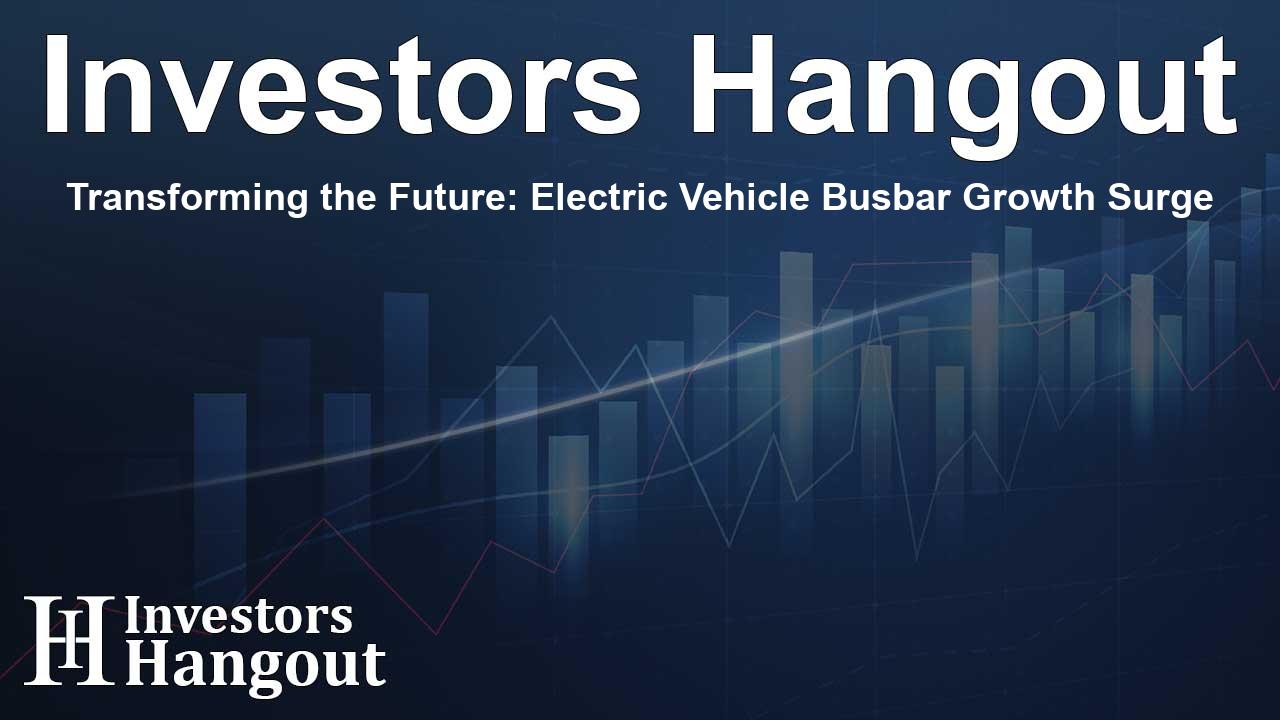Transforming the Future: Electric Vehicle Busbar Growth Surge

Electric Vehicle Busbar Market Insights
The electric vehicle (EV) busbar market is experiencing a significant shift, with recent analyses predicting it will grow from approximately US$ 1.7 billion in 2023 to a remarkable US$ 4.8 billion by 2030. This exciting development hints at a compound annual growth rate (CAGR) of around 15% from 2024 to 2030. The robust growth reflects the increasing demand for efficient power management in electric vehicles, highlighting the crucial role that busbars play in this evolution.
Market insights show that the electric vehicle busbar is a vital component, effectively distributing electric power within battery systems and the vehicle's infrastructure. With the rising popularity of battery electric vehicles (BEVs), which rely entirely on electric energy, the need for high-performance busbars is becoming more crucial than ever.
Current Market Landscape
In terms of market segmentation, the electric vehicle busbar sector is divided based on key factors such as EV type, product type, material utilized, sales channel, vehicle type, and regional dynamics.
EV Type Segmentation
When considering EV types, the market is mainly categorized into battery electric vehicles (BEVs) and hybrid electric vehicles (HEVs). The interest in BEVs dominates the landscape due to their all-electric systems, which require advanced busbar technologies for optimal functioning. Conversely, HEVs, integrating both electric and combustion capabilities, generally have less complex busbar needs, further reflecting the expanding edge for BEVs in terms of market share.
Product Type Analysis
Within products, the electric vehicle busbar market distinguishes between rigid and flexible busbars. Rigid busbars are expected to maintain dominance, given their superior electrical conductivity, strength, and thermal management capabilities. However, the demand for flexible busbars is projected to grow rapidly, owing to their adaptability in vehicle designs and enhanced installation versatility.
Material Dynamics in the Busbar Market
The materials choice significantly influences busbar performance. Currently, copper is the leading choice due to its exceptional conductivity and strength. Nevertheless, aluminum is witnessing faster adoption, as it provides a lighter alternative with reasonable conductivity, crucial for the ongoing trend of weight reduction in electric vehicle design.
Sales Channels and Growth Regions
In terms of sales channels, battery manufacturers are predicted to continue as the primary distributors, yet original equipment manufacturers (OEMs) are on a growth trajectory, strengthened by the rise in demand for electric vehicles across the globe.
Regional Trends in Electric Vehicle Busbar Market
Regionally, the Asia-Pacific is tipped to remain at the forefront of the electric vehicle busbar market, buoyed by its robust EV production framework, with significant players invested in this sector. North America may also see an acceleration in market growth propelled by policy incentives and the expanding EV landscape, making the region a promising frontier for EV innovations.
Drivers of Market Growth
Several factors are steering growth in the electric vehicle busbar market:
- Rising Demand for Electric Vehicles: The global transition towards electric vehicles is reshaping demand for busbars, which are essential in facilitating efficient power distribution.
- Technological Advancements: Innovations in busbar design and materials are enhancing performance, allowing these components to manage higher power levels efficiently.
- Infrastructure Development: Expanding EV charging stations and energy storage solutions further increase the need for robust busbars for electric applications.
Competitive Landscape
The electric vehicle busbar market remains moderately concentrated, with numerous players actively competing. Companies are diversifying their offerings through mergers and acquisitions and focusing on enhancing their regional presence and service quality. Key players in this market include:
- Amphenol Corporation
- APTIV
- Ennovi
- Methode Electronics
- Shenzhen Everwin Precision Technology Co, Ltd.
- SCHERDEL
- Suzhou West Deane Machinery Inc.
Frequently Asked Questions
What is the projected size of the electric vehicle busbar market by 2030?
The electric vehicle busbar market is expected to reach approximately US$ 4.8 billion by 2030.
What factors are driving the growth of the electric vehicle busbar market?
Factors include increased electric vehicle production, technological advancements in materials, and the development of vital charging infrastructure.
Which material is preferred for electric vehicle busbars?
Copper is primarily favored due to its superior electrical properties, though aluminum is gaining popularity due to its lightweight and cost advantages.
How are vehicle types segmented in the electric vehicle busbar market?
The market segments vehicle types into battery electric vehicles (BEVs) and hybrid electric vehicles (HEVs), with BEVs leading the market.
What regions are seeing growth in the EV busbar market?
Asia-Pacific is currently the largest market, with North America anticipated to grow rapidly due to supportive policies and increasing demand.
About The Author
Contact Dominic Sanders privately here. Or send an email with ATTN: Dominic Sanders as the subject to contact@investorshangout.com.
About Investors Hangout
Investors Hangout is a leading online stock forum for financial discussion and learning, offering a wide range of free tools and resources. It draws in traders of all levels, who exchange market knowledge, investigate trading tactics, and keep an eye on industry developments in real time. Featuring financial articles, stock message boards, quotes, charts, company profiles, and live news updates. Through cooperative learning and a wealth of informational resources, it helps users from novices creating their first portfolios to experts honing their techniques. Join Investors Hangout today: https://investorshangout.com/
The content of this article is based on factual, publicly available information and does not represent legal, financial, or investment advice. Investors Hangout does not offer financial advice, and the author is not a licensed financial advisor. Consult a qualified advisor before making any financial or investment decisions based on this article. This article should not be considered advice to purchase, sell, or hold any securities or other investments. If any of the material provided here is inaccurate, please contact us for corrections.
